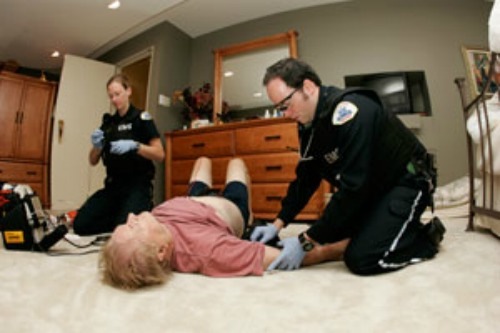
Prevent Medical Errors in the Field with Cognitive Strategies
EMS is dispatched to the home of an 82-year-old female with a chief complaint of shortness of breath. On arrival, the crew learns she has had a dry cough for a week and is now complaining of significant malaise and shortness of breath when she lies flat, but denies any chest pain.
On examination, they find her respirations to be labored, but she’s not in severe distress. Vital signs are: heart rate of 114 beats per minute (sinus rhythm), respiratory rate of 28 breaths per minute, blood pressure of 154/105 mmHg, oral temperature of 99.5 degrees F, and O2 saturation is 90% on room air.
On auscultation of the lungs, crackles are heard at both bases. Suspecting the patient of having heart failure, the paramedics examine her legs and find mild peripheral edema.
A large number of prescription medication bottles are found near the patient’s bedside, most of them cardiovascular medications: hydrochlorothiazide, ramipril and metoprolol.
Based on a presumptive diagnosis of heart failure, 40 mg of furosemide is administrated by IV. On ED arrival, the EMS crew mentions to the on-duty resident that the “fluid-loaded patient” is hypoxic, and may need more diuretic.
Shortly after, the patient develops a temperature of 103.3 degrees F and a chest X-ray shows left lower lobe pneumonia. Unfortunately, by this time, the patient’s kidneys have suffered some initial injury from the IV furosemide and she requires fluid resuscitation for the next week in hospital.
Introduction
Prehospital healthcare providers face difficult circumstances every day in their role as emergency responders, dealing with people in their most vulnerable states and often at the pinnacle of emotional intensity. While EMTs and paramedics have been trained to operate in such high-stress environments, they’re ultimately human, and thus make mistakes.
This article discusses the types of medical errors that may occur in prehospital healthcare and suggests ways EMS providers may prevent them from occurring.
Source:
read more


